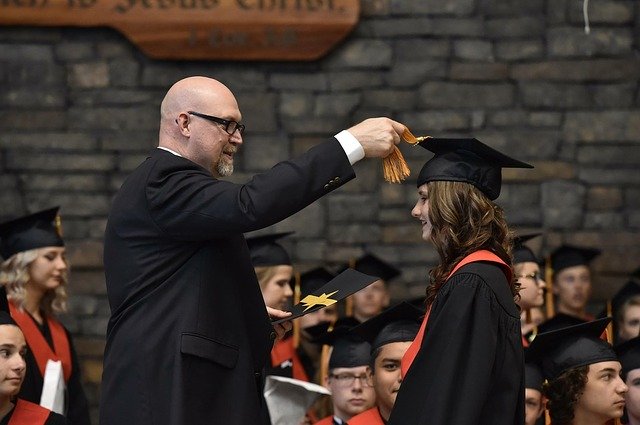How to Graduate with Cords

A graduation is a special time, one characterized by achievement and the accomplishment of long-term goals. To represent these achievements, many college graduates wear colored cords along with their traditional robes, caps, and stoles. What are these cords, and how can a student graduate with one? There are a number of ways students can do this including pursuing academic excellence, advocating for a school, and participating in student life. The wide array of cords available today means that many students can earn a cord and proudly display their achievements on graduation day.
All College or Latin Honors
One way in which a graduating student can earn cords is to receive Latin or All College honors by graduating with a certain GPA or in the highest percentiles of a class. As classified by the Association of College Honor Societies, cords worn to represent these honors would be bronze for graduating Cum laude, silver for graduating Magna cum laude, and gold for graduating Summa cum laude. Some schools, however, use their own school colors in lieu of the ACHS standards, and even assign additional color cords for acknowledging higher honors within the structure of the school’s curriculum.
Departmental Honors
Students can also earn cords for their work in a particular field of study. Students earning a cord representing departmental honors often must have a certain GPA, as well. While departmental honor cords can vary from school to school, some colors are typically associated with certain departments or areas of study. Black cords, for example, are often earned by graduates in business or related fields, such as accounting. Silver cords are associated most often with medical science or physics. Finally, purple cords often go to law or dental students, while red cords go to students studying in fields such as divinity or journalism.
Honor Societies
Honor societies also bestow honor society graduation cords to students who are members of their organizations. Each organization has its own color scheme, and these schemes typically involve two or more colors that are intertwined in the cord. Membership in an honor society is typically predicated on scholastic rank and/or grade point average overall or within a particular department with which the honor society is associated. Some well-known honor societies include:
- Alpha Kappa Delta / Sociology
- Eta Sigma Phi / Classics
- Nu Rho Psi / Neuroscience
- Omicron Delta Epsilon / Economics
- Pi Delta Phi / French
- Pi Mu Epsilon / Math
- Sigma Pi Sigma / Physics
Some fraternities and sororities that are not associated with an academic field might require that a student participate in a particular ceremony or training program in order to earn membership.
Student Life
Schools may bestow cords upon students, too, who have participated in student life activities, clubs, and organizations. These honors might be for engaging in community-building activities, such as fundraising, participating in student government, or serving as an ambassador of the institution by giving admissions tours or representing the school at public events.
Diversity Group Affiliation
Finally, many students wear color cords to represent their affiliation with and work in support of a diversity group.
Graduating with cords is one of the great traditions of academia, giving students a way to put their accomplishments on proud display. Representing everything from academic excellence to good citizenship, graduation cords reflect the multiple gifts and diverse perspectives that make today’s colleges so inspiring.
Would you like to receive similar articles by email?





